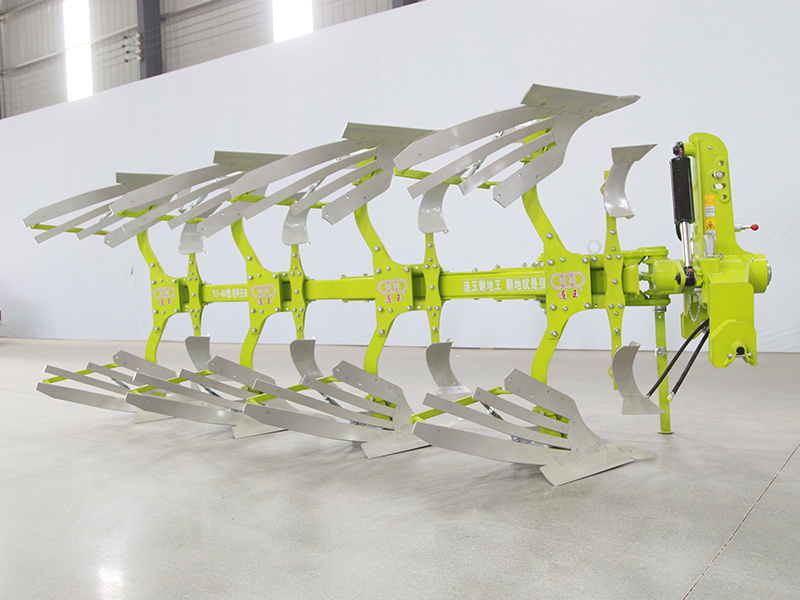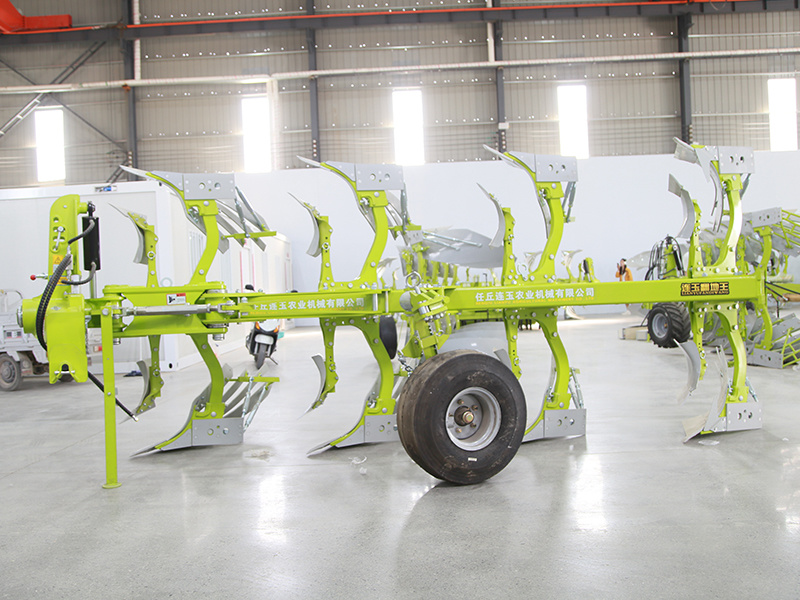Gexinzhuang Industrial Zone, Yilunbao Town, Renqiu City, Hebei Province, China
Transform Your Farming Efficiency with a Hydraulic Flip Plough: The Ultimate Guide
2025-08-12
Summary:
Transform Your Farming Efficiency with a Hydraulic Flip Plough: The Ultimate Guide
Table of Contents
Introduction: Revolutionizing Modern Farming
What is a Hydraulic Flip Plough?
Benefits of Using a Hydraulic Flip Plough
How Hydraulic Flip Ploughs Work: The Mechanics
Choosing the Right Hydraulic Flip Plough for Your Farm
Maintenance Tips for Hydraulic Flip Ploughs
Real

Transform Your Farming Efficiency with a Hydraulic Flip Plough: The Ultimate Guide
Table of Contents
- Introduction: Revolutionizing Modern Farming
- What is a Hydraulic Flip Plough?
- Benefits of Using a Hydraulic Flip Plough
- How Hydraulic Flip Ploughs Work: The Mechanics
- Choosing the Right Hydraulic Flip Plough for Your Farm
- Maintenance Tips for Hydraulic Flip Ploughs
- Real-World Applications of Hydraulic Flip Ploughs
- The Future of Farming Technology
- Conclusion: Embrace Efficiency in Agriculture
- Frequently Asked Questions
Introduction: Revolutionizing Modern Farming
In today’s fast-paced agricultural landscape, **efficiency** and **productivity** are paramount for success. Farmers are continuously seeking innovative solutions that can enhance their operations and deliver higher yields. One such advancement that is gaining traction in the industry is the **hydraulic flip plough**. This remarkable piece of equipment not only simplifies ploughing tasks but also transforms how farmers approach land management, crop preparation, and soil health.
What is a Hydraulic Flip Plough?
A **hydraulic flip plough** is a type of agricultural implement designed for turning soil in preparation for planting. Unlike traditional ploughs, which require manual labor or complex adjustments to change the direction of the ploughing, a hydraulic flip plough utilizes hydraulic systems to facilitate quick and easy flipping of the ploughing body. This innovation offers several advantages, including improved soil aeration, enhanced weed control, and increased operational speed.
Key Features of Hydraulic Flip Ploughs
- **Hydraulic Control**: Effortlessly switch between ploughing and transportation modes with the push of a button.
- **Adjustable Depth Settings**: Tailor the plough's depth according to specific crop requirements and soil conditions.
- **Durable Construction**: Built from high-quality materials to withstand rigorous agricultural conditions.
- **Versatile Usage**: Ideal for various soil types, from light sandy soils to heavy clay.
Benefits of Using a Hydraulic Flip Plough
Investing in a **hydraulic flip plough** can significantly enhance your farming operations. Here are some standout benefits:
1. Increased Efficiency
The hydraulic mechanism allows for rapid adjustments, enabling farmers to cover larger areas in less time. Traditional ploughing methods can be labor-intensive and slow, but hydraulic flip ploughs streamline this process.
2. Improved Soil Health
By flipping the soil effectively, these ploughs promote better aeration and moisture retention. This practice enhances soil structure, which is crucial for crop growth.
3. Labor Savings
With the automation of the ploughing process, farmers can reduce labor costs and minimize the risk of injury associated with manual ploughing.
4. Enhanced Weed Control
Flipping the soil disrupts weed growth, providing a more effective solution for weed management than conventional methods.
5. Adaptability to Different Crops
Whether you are planting grains, vegetables, or cover crops, a hydraulic flip plough can be adjusted to meet the unique needs of various crops.
How Hydraulic Flip Ploughs Work: The Mechanics
Understanding how hydraulic flip ploughs operate is essential for maximizing their potential. Here’s a closer look at the mechanics behind these advanced tools.
1. Hydraulic System Overview
The hydraulic system consists of a pump, cylinder, and control valve. When activated, the pump generates hydraulic fluid pressure that moves the cylinder, allowing for the flipping action of the plough.
2. Ploughing Action
As the **hydraulic flip plough** moves through the field, its blades cut into the soil. Once the desired depth is achieved, the hydraulic system can be engaged to flip the soil, efficiently turning the top layer over.
3. Control Mechanisms
Operators can manage the plough’s functions from the tractor’s cabin, allowing for real-time adjustments based on field conditions, enhancing overall control and efficiency.
Choosing the Right Hydraulic Flip Plough for Your Farm
Selecting the right hydraulic flip plough involves considering several factors to ensure optimal performance.
1. Assess Your Farming Needs
Evaluate the type of crops you grow, your soil conditions, and the size of your farming operation. This assessment will help you determine the specifications you require in a plough.
2. Consider the Size and Power Requirements
Match the plough size to your tractor’s horsepower and capabilities. An inadequately powered tractor can hinder performance and lead to inefficiencies.
3. Look for Durability
Invest in a plough made from robust materials that can withstand the rigors of farming. Research manufacturers and read reviews to identify reliable options.
4. Maintenance and Support
Select a plough that comes with manufacturer support and readily available replacement parts. Easy maintenance will prolong the lifespan of your equipment.
Maintenance Tips for Hydraulic Flip Ploughs
To keep your hydraulic flip plough operating at peak efficiency, regular maintenance is essential.
1. Regular Inspections
Conduct routine checks of the hydraulic fluid levels, hoses, and cylinders to identify any wear and tear early on.
2. Clean After Use
Soil and debris can accumulate on the plough, affecting its performance. Cleaning the plough after each use prevents buildup and corrosion.
3. Lubrication
Ensure that all moving parts are properly lubricated to reduce friction and wear, which can lead to mechanical failures.
4. Follow the Manufacturer’s Guidelines
Adhere to the maintenance schedule recommended by the manufacturer to ensure optimal performance and longevity of the equipment.
Real-World Applications of Hydraulic Flip Ploughs
Hydraulic flip ploughs are versatile and can be employed in various agricultural settings. Here are some applications:
1. Crop Rotation
Farmers can easily switch between different crops by preparing the land appropriately for each planting season using a hydraulic flip plough.
2. Conservation Tillage
This technique minimizes soil disturbance, promoting soil health while making use of the efficient soil flipping capabilities of a hydraulic plough.
3. Organic Farming
Hydraulic flip ploughs can assist in managing weeds without the need for chemical herbicides, aligning with organic farming practices.
The Future of Farming Technology
As agricultural technology continues to evolve, hydraulic flip ploughs are just one of the many innovations that promise to enhance farming efficiency. The integration of **precision agriculture** tools, such as GPS and data analytics, allows farmers to make informed decisions that optimize their operations further.
1. Smart Farming Practices
The future of farming lies in smart technology that leverages data to improve crop yields and reduce costs. Hydraulic flip ploughs will likely integrate with these technologies for enhanced performance.
2. Sustainability and Eco-Friendly Practices
As sustainability becomes more crucial in agriculture, tools like hydraulic flip ploughs that promote soil health and reduce chemical usage will be increasingly valuable.
Conclusion: Embrace Efficiency in Agriculture
In conclusion, the **hydraulic flip plough** stands out as a transformative tool in modern agriculture. By enhancing efficiency, improving soil health, and providing significant labor savings, these ploughs are an indispensable asset for farmers looking to optimize their operations. As technology continues to advance, embracing tools like the hydraulic flip plough will ensure that farmers are well-equipped to meet the challenges of the future.
Frequently Asked Questions
1. What is the primary advantage of using a hydraulic flip plough?
The primary advantage of a hydraulic flip plough is its ability to increase efficiency and reduce labor costs by automating the ploughing process.
2. How deep can a hydraulic flip plough penetrate the soil?
Most hydraulic flip ploughs can be adjusted to penetrate depths of up to 12-16 inches, depending on the soil type and crop requirements.
3. Are hydraulic flip ploughs suitable for all soil types?
Yes, hydraulic flip ploughs are designed to work effectively in a variety of soil types, from sandy to heavy clay.
4. What maintenance is required for a hydraulic flip plough?
Regular inspections, cleaning, lubrication of moving parts, and adherence to the manufacturer's maintenance guidelines are essential for optimal performance.
5. Can I use a hydraulic flip plough for organic farming?
Yes, hydraulic flip ploughs can be used in organic farming practices as they help control weeds without the use of chemical herbicides.
By incorporating a hydraulic flip plough into your farming operations, you can maximize efficiency and improve your overall productivity, paving the way for success in modern agriculture.
Keywords:
Previous Page
Contact Us
Whatsapp:
Email:
Address:
Ge Xin Zhuang Industrial Zone, Yi Lun Bao Township, Ren Qiu City, Hebei Province,China











